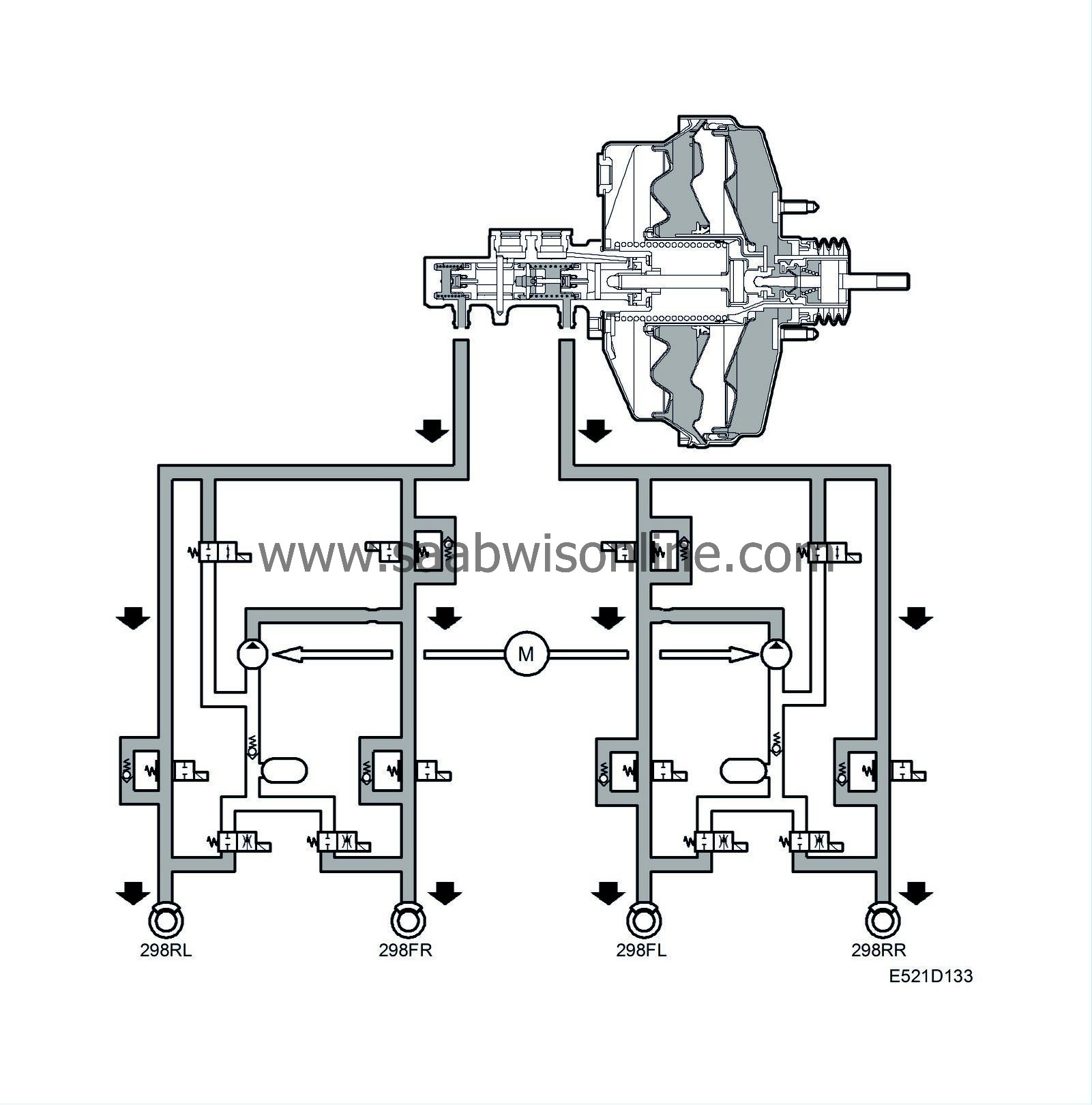PRE-RELEASE
Braking without ABS modulation
| Braking without ABS modulation |
The primary piston's central valve closes the return passage to the brake fluid reservoir and pressure mounts in front of the primary piston. The pressure also affects the secondary piston, which is pushed forward causing the central valve of the secondary piston to close.
In the hydraulic unit, the inlet valve is open and the outlet valve closed.
The hydraulic pressure in both brake circuits increases, and since the pistons are the same size the pressure through the valve block in both brake circuits is the same.
The pressure is propagated through the brake system and acts on the brake piston in each brake housing. The brake pistons force the brake pads against the brake discs. When the brake pedal is released, the pistons in the master cylinder are returned, and the central valves in primary and secondary circuits open. The pressure drops and the brake piston in each brake caliper stays in the brake off position aided by the piston sealing rings.



